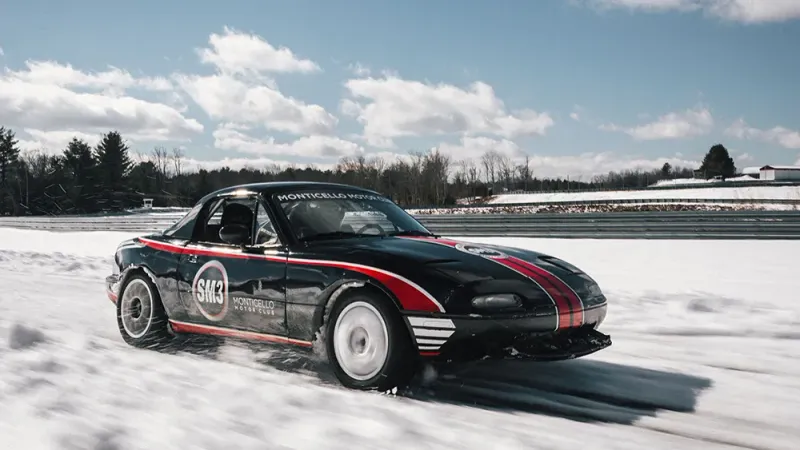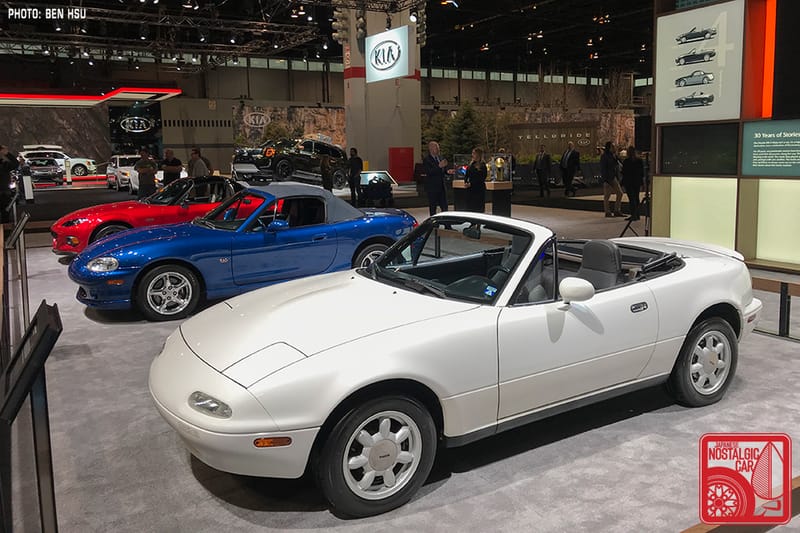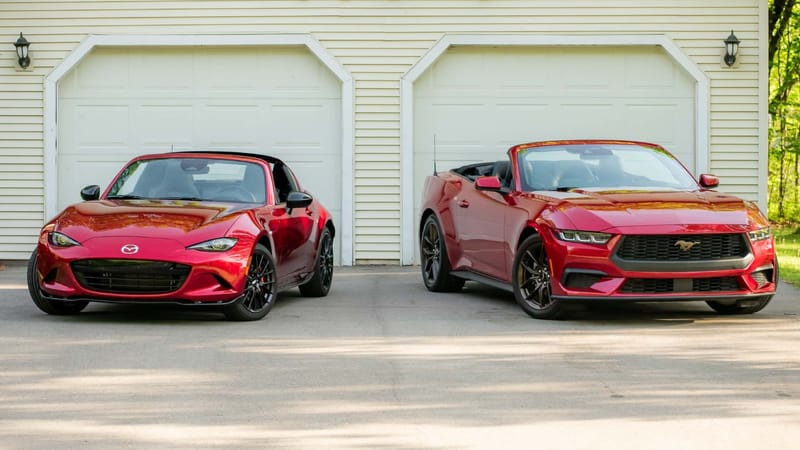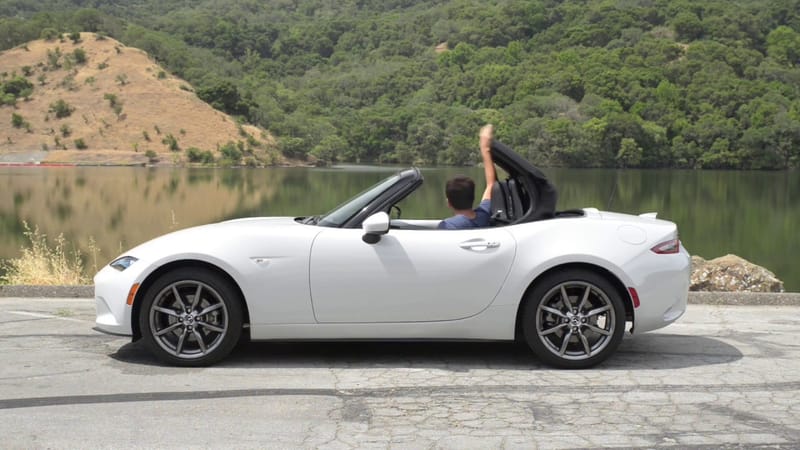Miata Ads Through the Years: How Mazda Marketed the MX-5
The Mazda MX-5 Miata has spent more than three decades selling the same core idea: lightweight fun, top-down freedom, and a driver-first feel. But while the spirit has stayed consistent, the way Mazda has told that story has evolved with every generation.
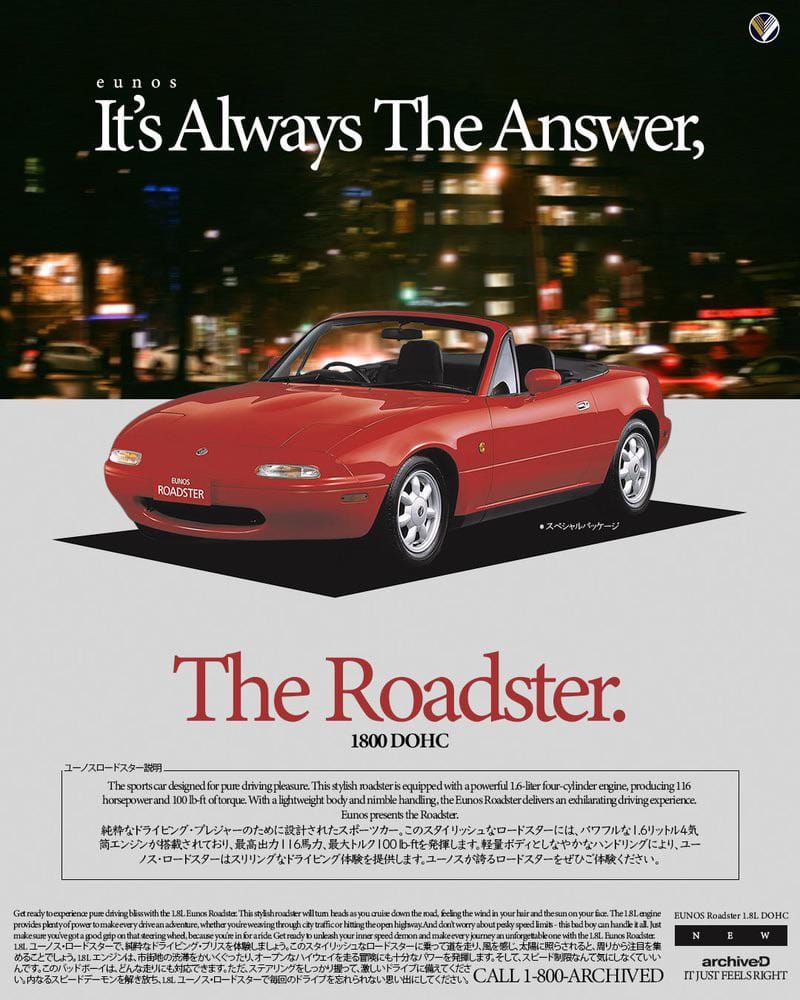
The Mazda MX-5 Miata has spent more than three decades selling the same core idea: lightweight fun, top-down freedom, and a driver-first feel. But while the spirit has stayed consistent, the way Mazda has told that story has evolved with every generation.
Launch & Early Identity (1989–1990)
The MX-5 made its world debut at the 1989 Chicago Auto Show and reached U.S. dealerships in May of that year as a 1990 model. Mazda’s launch ads leaned heavily on the idea of reviving the classic roadster, a small, simple, and light sports car for the modern age. In the U.S., early commercials showed sun-drenched drives, hair in the wind, and a focus on pure joy behind the wheel.

In Japan, Mazda paired these visuals with the philosophy of “Jinba Ittai”, translated as “horse and rider as one”, to emphasize the intimate connection between driver and car. Over in the UK, ads rolled out in early 1990 with the same simplicity, positioning the MX-5 as the antidote to heavy, over-engineered sports cars.
First-Gen (NA) Campaigns & Special Editions (1990s)
Throughout the 1990s, the Miata’s marketing momentum stayed strong, thanks in part to special editions that kept the buzz alive. One of the most notable was the 10th Anniversary Model in 1999, promoted as a more refined and collectible version of the car, complete with unique paint, Bilstein suspension, and a six-speed manual gearbox.

In Japan, the playful slogan “Otona Nara Asobanakya” (“If you’re an adult, you gotta play”) gave the NA’s marketing a lighthearted, almost rebellious energy. In North America and Europe, Mazda leaned more toward emotional phrasing like “It just feels right,” aiming to capture both the joy and the romance of driving.
The “Zoom-Zoom” Era & NB Generation (Late 1990s–2000s)
By the late 1990s, Mazda was ready to refresh its brand image, and in 2000 it launched the now-iconic “Zoom-Zoom” campaign. These ads featured a young boy whispering the phrase over a Capoeira-inspired soundtrack, evoking a childlike joy in motion. It was catchy, memorable, and instantly associated with the brand.

The NB generation (1999–2005) fit perfectly into this new tone. Marketing leaned into the Miata’s playful agility, framing it as a car that could make anyone feel young again. The sharper styling and performance upgrades of the NB gave Mazda even more material to work with, making the Miata both fun and aspirational.

Third-Gen (NC): Broader Appeal & Emotional Storytelling (2005–2015)
The third-generation NC, introduced in 2005, was a more mature Miata, larger, more comfortable, and available with the Power Retractable Hardtop (PRHT). Mazda’s advertising expanded to highlight its versatility, selling it not just as a weekend toy, but as a car that could fit into everyday life.

The “Zoom-Zoom” tagline remained, but toward the end of the NC’s life Mazda introduced the “Driving Matters” campaign in 2015. This shift brought a more emotional angle, with the standout ad “A Driver’s Life” telling the story of a driver’s journey from childhood to adulthood, the Miata as a constant companion through the years. It was heartfelt, nostalgic, and positioned the car as part of life’s best moments.
Fourth-Gen (ND) & Heritage-Driven Marketing (2014–Present)
When the ND generation debuted in 2014, Mazda’s ads walked a fine line between modern innovation and deep respect for heritage. Launch campaigns showed the ND carving along winding roads, highlighting its lighter weight, Skyactiv technology, and athletic stance, while still tapping into the same Jinba Ittai philosophy that had defined the original.
Heritage became a major selling point. In 2016, Mazda celebrated the 1 millionth Miata with a world tour and fan events. Special editions became key marketing opportunities: the 30th Anniversary (2019) in striking Racing Orange, the 100th Anniversary Edition (2020) with elegant red-and-white styling, and the MX-5 25th Anniversary Edition (2014 U.S.), a pre-launch ND teaser car that was marketed heavily in the States with deep red paint, white leather, and limited production numbers. Many recent U.S. ads have even featured NA Miatas alongside the latest models, proving nostalgia is a powerful marketing tool.

What Has Stayed Consistent
Across every campaign, three pillars have defined Miata advertising. The first is lightweight fun, Mazda always shows the car in motion, darting through corners or cruising scenic roads. The second is driver engagement, with ads centering on the experience rather than technical specs. The third is emotional connection, framing the Miata as more than transportation, it’s a companion for adventures, milestones, and everyday joy.

